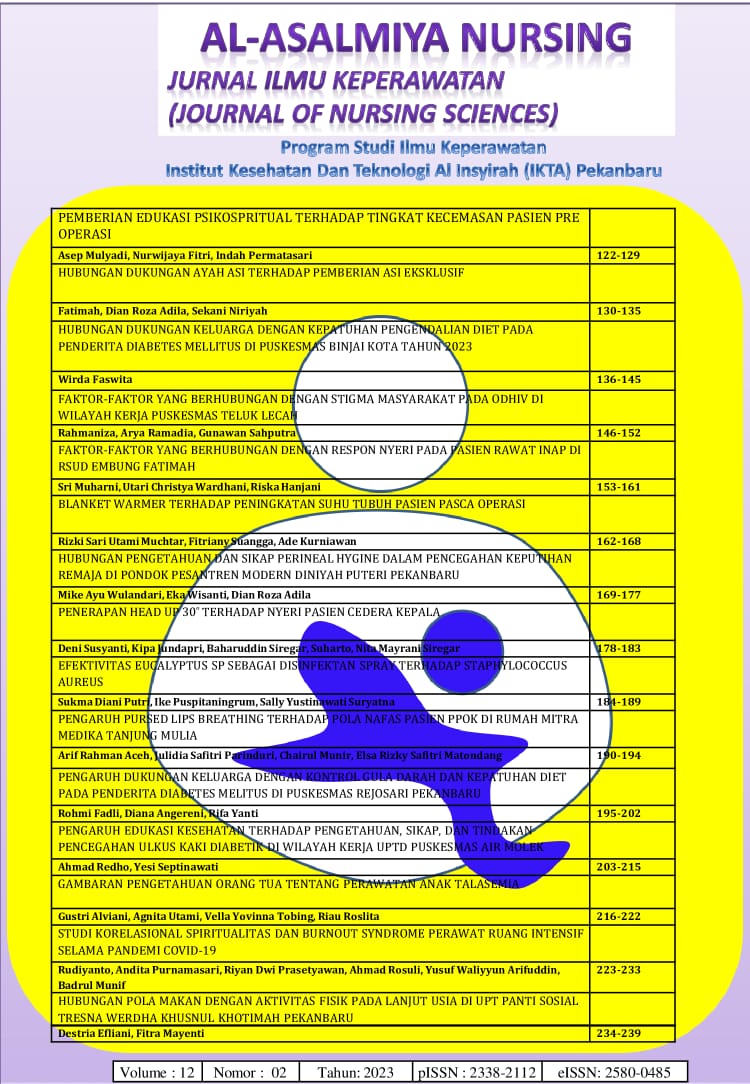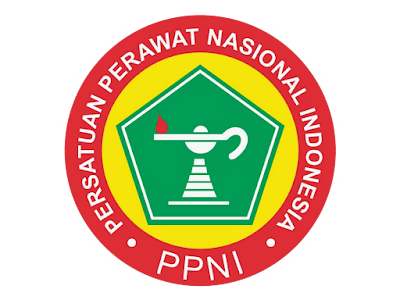EFEKTIVITAS EUCALYPTUS SP SEBAGAI DISINFEKTAN SPRAY TERHADAP STAPHYLOCOCCUS AUREUS
DOI:
https://doi.org/10.35328/keperawatan.v12i2.2566Keywords:
Eucalyptus urophylla, Staphylococcus aureus, disinfectants, antisepticAbstract
Background: Staphylococcus aureus is one of the pathogenic microorganisms that often plays a role in infectious diseases. Disinfectants and antiseptics (also called biocides) are often used to treat microorganisms on inanimate objects and human skin in order to prevent infectious diseases. Eucalyptus sp leaf extract contains 1.8-cineole which is an antimicrobial compound which is safer for human mucosal tissue compared to active substances commonly found in disinfectants and antiseptics. Objective: This research aims to obtain disinfectants and antiseptics that are more environmentally friendly and also detain the growth of S. aureus. Method: Eucalyptus sp extract is obtained from steam distillation of dried leaf samples then the essential oil is added with chlorhexidine digluconate (CHG) and 70% isopropyl alcohol (IPA). The formula then tested on petri disc and medium contained S. aureus. Results: Disinfectant and antiseptic spray extracted from Eucalyptus sp essential oil, chlorhexidine digluconate (CHG) and 70% isopropyl alcohol (IPA) can inhibit the activity of Staphylococcus aureus. Conclusion: The results of the research indicate that the active compounds contained in Eucalyptus sp are effective in killing Staphylococcus aureus bacteria so they have the potential to make disinfectants and antiseptic sprays.
Keywords: Eucalyptus urophylla; Staphylococcus aureus; disinfectants; antiseptic
Downloads
References
Ahmad-Mansour, N., Loubet, P., Pouget, C., Dunyach-Remy, C., Sotto, A., Lavigne, J. P., & Molle, V. (2021). Staphylococcus aureus toxins: An update on their pathogenic properties and potential treatments. In Toxins (Vol. 13, Issue 10). MDPI. https://doi.org/10.3390/toxins13100677
Chaves, T. P., Pinheiro, R. E. E., Melo, E. S., Soares, M. J. dos S., Souza, J. S. N., Andrade, T. B. de, Lemos, T. L. G. de, & Coutinho, H. D. M. (2018). Essential oil of Eucalyptus camaldulensis Dehn potentiates βlactam activity against Staphylococcus aureus and Escherichia coli resistant strains. Industrial Crops and Products, 112, 70–74. https://doi.org/10.1016/j.indcrop.2017.10.048
Hamad Vuai, S. A., Sahini, M. G., Sule, K. S., Ripanda, A. S., & Mwanga, H. M. (2022). A comparative invitro study on antimicrobial efficacy of on-market alcohol-based hand washing sanitizers towards combating microbes and its application in combating Covid-19 global outbreak. Heliyon, 8(11). https://doi.org/10.1016/j.heliyon.2022.e11689
Hendry, E., Conway, B., & Worthington, T. (2012). Antimicrobial efficacy of a novel eucalyptus oil, chlorhexidine digluconate and isopropyl alcohol biocide formulation. International Journal of Molecular Sciences, 13(11),
–14025. https://doi.org/10.3390/ijms131114016
Matsumoto, H., Shiotani, A., & Graham, D. Y. (2019). Current and Future Treatment of Helicobacter pylori
Infections. In Advances in Experimental Medicine and Biology (Vol. 1149, pp. 211–225). Springer New York LLC. https://doi.org/10.1007/5584_2019_367
Mcdonnell, G., Russell, A. D., Operations, L., & Louis, S. (1999). Antiseptics and Disinfectants: Activity, Action, and Resistance. In CLINICAL MICROBIOLOGY REVIEWS (Vol. 12, Issue 1).
Poppolo Deus, F., & Ouanounou, A. (2022). Chlorhexidine in Dentistry: Pharmacology, Uses, and Adverse
Effects. In International Dental Journal (Vol. 72, Issue 3, pp. 269–277). Elsevier Inc. https://doi.org/10.1016/j.identj.2022.01.005
Sinarsih, N. K., Susanah Rita, W., & Puspawati, N. M. (2021). Aktivitas Antibakteri Fraksi Ekstrak Etanol Daun Trembesi (Samanea saman (Jacq.) Merr) terhadap Staphylococcus aureus. International Journal of Applied Chemistry Research, 1, 2549–3671. https://doi.org/10.23887/ijacrundiksha
Song, X., Vossebein, L., & Zille, A. (2019). Efficacy of disinfectantimpregnated wipes used for surface
disinfection in hospitals: A review. In Antimicrobial Resistance and Infection Control (Vol. 8, Issue 1).
BioMed Central Ltd. https://doi.org/10.1186/s13756-019-0595-2
Steinsapir, K. D., & Woodward, J. A. (2017). Chlorhexidine Keratitis: Safety of Chlorhexidine as a Facial
Antiseptic. In Dermatologic Surgery (Vol. 43, Issue 1, pp. 1–6). Lippincott Williams and Wilkins. https://doi.org/10.1097/DSS.0000000000000822
Yılmaz, F. (2021). Investigating the usage of eucalyptus leaves in antibacterial finishing of textiles against Gram-positive and Gramnegative bacteria. Journal of the Textile Institute, 112(2), 341–345. https://doi.org/10.1080/00405000.2020.1753394
Downloads
Published
Issue
Section
License
Copyright (c) 2023 Al-Asalmiya Nursing: Jurnal Ilmu Keperawatan (Journal of Nursing Sciences)

This work is licensed under a Creative Commons Attribution 4.0 International License.














